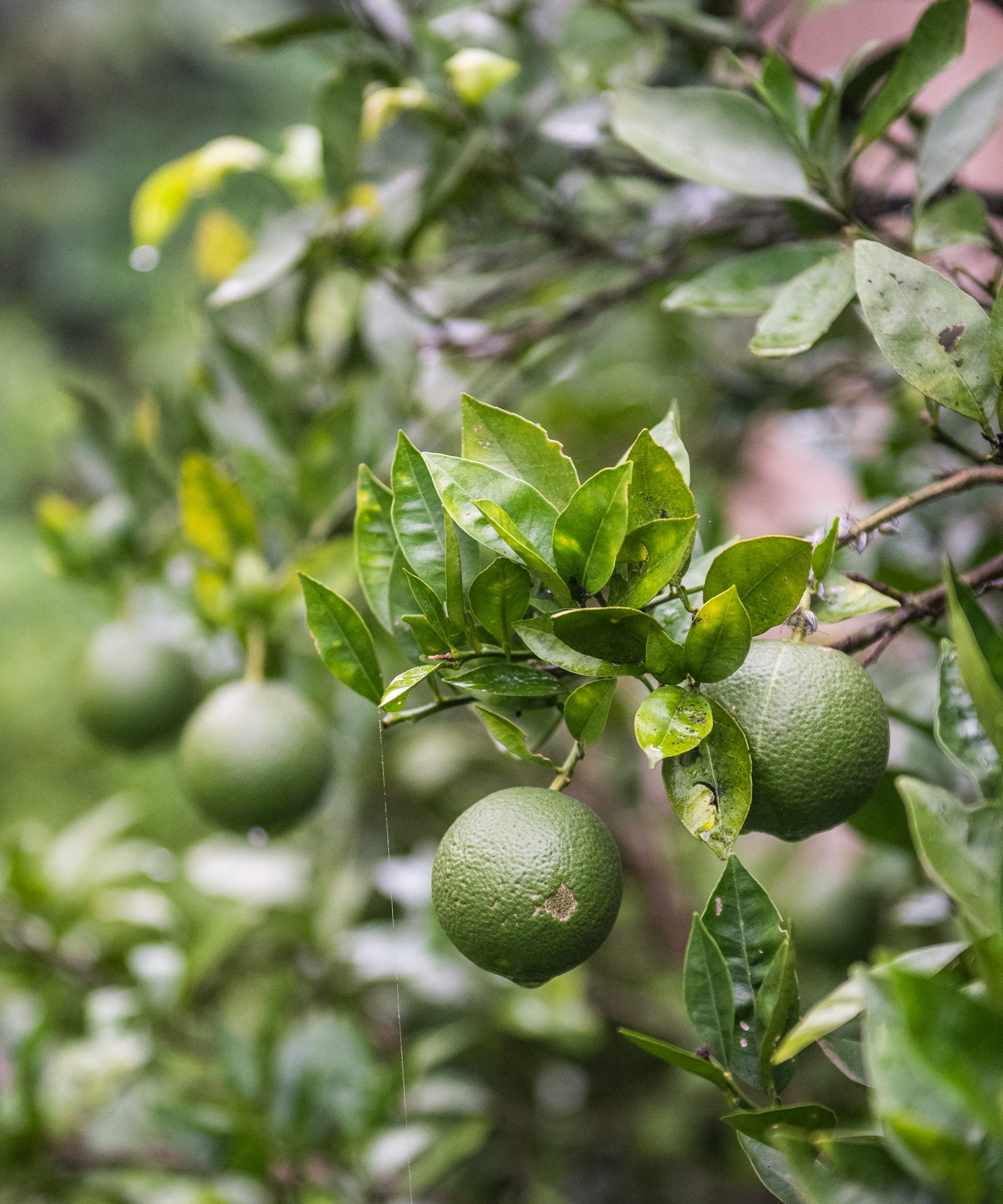How to prune a lime tree and why it is better to do 'conservative’ trimming
We reveal the simple steps for pruning lime trees every two or three years


Growing lime trees in your backyard can give you a harvest of delicious homegrown limes to be used for baking or in cocktails. The sun-loving citrus trees can be easy to maintain and that includes only needing pruning every few years.
Whether you live in a warm climate that can house limes outdoors year-round, or grow your lime trees in pots to move indoors for winter, there are benefits to pruning citrus trees. A little bit of trimming can keep the tree in shape, healthy, and produce a bounty of fruit.
But when is the best time to prune a lime tree and what is exactly involved? To avoid any potential confusion, we take a close look and hear from some experts about when and how to prune a lime tree at home.

Pruning lime trees helps to keep them productive
Understanding the different lime trees
Lime trees (Citrus x aurantifolia) are those that produce citrus fruits. They are different to the Linden trees in the Tilia genus, that are also often referred to as lime trees.
The two types of trees are not related and are in fact very different in terms of growth and maintenance. In terms of this pruning guide, we are focusing on the lime trees that are grown for fruits as part of many people's backyard ideas.
When to trim a lime tree

It is important to prune lime trees at the correct time of year
Let’s start with the good news. That is that limes do not need pruning every year as part of a citrus tree care regime. However, they do benefit from some attention to help grow healthily and prevent diseases every few years, as pruning will boost the amount of light and air that can penetrate the tree.
Evan Torchio, CEO of Tree Menders, claims that pruning lime trees actually ‘offers a multitude of benefits’ in terms of the tree’s health and also the production of fruit. He says: ‘Regular pruning, ideally every 2-3 years for mature trees, helps maintain a manageable size and shape, making harvesting a breeze.
Design expertise in your inbox – from inspiring decorating ideas and beautiful celebrity homes to practical gardening advice and shopping round-ups.
‘The key lies in timing and technique. Prune in late winter or early spring, while the tree is dormant, to avoid stimulating unwanted summer growth.’
The time for pruning can be late winter or early spring, depending on your local frost timings. Late winter will be a good time for frost-free US hardiness zones, while those that do get winter frosts are best to wait until spring once the risk of frosts has passed.
It is not advisable to prune in the middle of winter, that would be a fruit tree pruning mistake as the tree can suffer damage if frost gets into pruning cuts. If you spot any damage from frosts on your lime tree, then wait until new growth has appeared in the spring to do any pruning.

Evan Torchio is the CEO and Founder of Tree Menders. He has a bachelor's degree in Forestry and experience from hands-on tree work.
How do you prune a lime tree

Fruits need to be removed before pruning lime trees
If you are pruning it every two or three years, then it may be difficult to remember exactly how to prune your lime tree each time you head out with the tools. Thankfully, it is a relatively simple pruning task to complete and can be done with a pair of pruning shears, and potentially some loppers or a pruning saw for thicker branches - depending on the size of your tree.
Diane Kuthy, the founder and head gardener for How To Grow Everything, grows three different kinds of lime trees in her orchard and offers a simple plan for people to follow when pruning lime trees.
- Diane says to ‘remove any remaining fruit from your tree’ before pruning. This can help you to clearly see the framework of the tree and also ensures easy access to the branches to trim
- Before doing any trimming it is important to clean your pruning shears. This means you don’t risk spreading disease around the backyard. All cutting tools also need to be sharp, this means they will make clean cuts that are easier for the tree to heal
- ‘Identify branches that are crossing over other branches, any broken or weak branches, and/or branches that are growing downward,’ says Diane. ‘These are the main branches you'll be cutting.’ Rubbing branches are removed as they can create entry points for disease, while weak branches will be unable to support the weight of fruit - so are best removed
- When it comes to how to prune the tree’s branches, Diane advises ‘cut the branches as close to the base as possible’. It is better practice to remove entire branches, rather than just shortening their length
Take your time to trim branches that are growing in unwanted directions, either towards the center of the tree or growing too far outside of the desired shape. Any branches that are near ground level are also best removed - as they may touch the floor when laden with fruit and can be at risk of fungal problems.
Be considerate with all of your pruning, but do not get too carried away. Lime trees do not require lots of pruning every few years and can still be thriving, and productive plants, with only light trimming.
Diane warns to be cautious and ‘cut away about 10-20% of the tree's branches at any given time’, as removing more than that risks causing stress to the plant. She adds: ‘It is generally best to be more conservative about pruning than liberal - as over pruning can cause irreparable damage to your tree.’

Diane Kuthy is the founder and head gardener for How To Grow Everything. She maintains a thriving fruit orchard of over 25 different varieties - including three different kind of lime trees.
How to prune lime trees in a container

Lime trees in pots do benefit from pruning
Lime trees are good options for fruit trees to grow in pots and they can also be a great indoor fruit tree to grow. If you are growing a lime tree in a pot, then follow the same rules outlined above to remove a small amount of damaged or unwanted branches.
It is advisable to keep the shape of the tree smaller at the top than at the bottom. When it comes to the shape, Alex Testel, from Frugal Frontier, advises that you need to ‘avoid creating a top-heavy shape to prevent the container tipping over’ and potentially damaging the lime tree.
FAQs
Do you prune finger limes?
Finger limes are a particular type of lime tree that produce distinctive long and thin fruits. The trees can be grown in the ground or in pots and benefit from some pruning - and the methods of trimming are the same as with any other types of lime tree.
Removing any dead, damaged, and diseased branches, along with weak, spindly, and unwanted growth, every couple of years can help to keep the trees looking at their best and being highly productive.
Lime trees are tender citrus trees that need to be brought indoors in winter. They can be damaged by temperatures under 25ºF, so growers in colder zones will often bring lemons and limes indoors in November - or even earlier depending on their climate. Bringing them indoors will impact their dormancy period - so keep an eye out for any signs that are starting to grow again if you intend to prune.

Drew has worked as a writer since 2008 and was also a professional gardener for many years. As a trained horticulturist, he worked in prestigious historic gardens, including Hanbury Hall and the world-famous Hidcote Manor Garden. He also spent time as a specialist kitchen gardener at Soho Farmhouse and Netherby Hall, where he grew vegetables, fruit, herbs, and cut flowers for restaurants. Drew has written for numerous print and online publications and is an allotment holder and garden blogger. He is shortlisted for the Digital Gardening Writer of the Year at the 2025 Garden Media Guild Awards.

